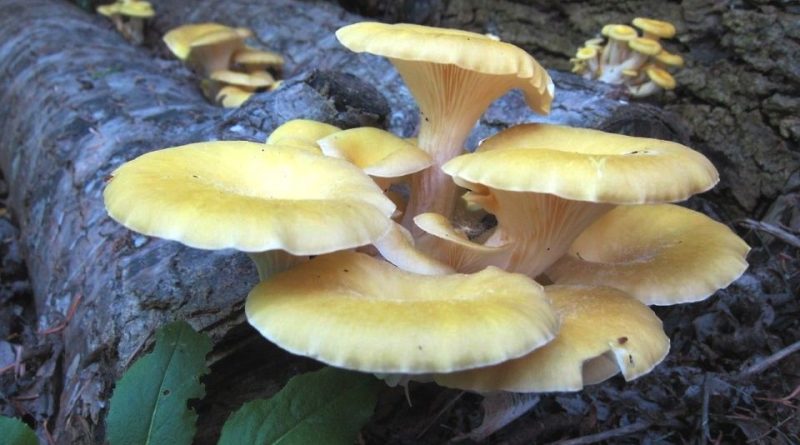Pleurotus cornucopiae
Pleurotus cornucopiae
The golden or yellow fungus (Pleurotus cornucopiae (Paulet) Rolland) is a saprophytic fungus belonging to the Pleurotaceae family.
Systematics –
From the systematic point of view it belongs to the Eukaryota Domain, Fungi Kingdom, Basidiomycota Division, Basidiomycetes Class, Agaricales Order, Pleurotaceae Family and therefore to the Genus Pleurotus and to the P. cornucopiae Species.
Among the main synonyms we mention: Agaricus cornucopiae (Paulet) Pers., Crepidotus cornucopiae (Paulet) Murrill and Dendrosarcus cornucopiae Paulet.
Etymology –
The term Pleurotus comes from the Greek πλευρόν pleurón side, side, side and from οὖς, ωτόϛ oús, otós ear: with the hat similar to an ear placed laterally. The specific epithet cornucopiae derives from cornus corno and from a copy of wealth, abundance: and from horn, due to the shape of the horn-like carpophore, of abundance.
Geographical Distribution and Habitat –
Pleurotus cornucopiae is a saprophytic-parasitic fungus that grows on stumps and broadleaf trunks and bears fruit in the period between summer and autumn.
Recognition –
The golden mushroom is recognized by the hat of 5-12 cm, first convex and then depressed and infundibuliform, of variable color between whitish or light gray, ocher brown or yellowish, glabrous.
The lamellas are white or concolorous although more clear, dense, decurrent on the stem, where they anastomose to form a lattice. The stem is 3-8 x 0.8-1.5 cm, often branched, more or less eccentric, full, whitish, almost completely covered by lamellas.
The meat is white, first soft, then rather tenacious, with a powdery smell and a sweet taste.
At the microscope we can see whitish spores in mass just deposited and then pink.
Cultivation –
The Pleurotus cornucopiae is a fungus that lends itself to cultivation on substrates of straw of blond wheat, of good quality and with procedures that keep well controlled humidity, temperature and brightness during the whole phase from the inoculation to the fruiting that normally takes place within a month from inoculation.
The ideal temperature for the birth of mushrooms is between 15 and 25 ° C.
Uses and Traditions –
Pleurotus cornucopiae is a fungus which, in its natural state, is not very common. It is a good and edible mushroom when young, after which it becomes leathery and therefore unusable.
It has an anti-inflammatory and antioxidant effect, it helps to increase the defenses of the immune system. Suitable for a low-calorie diet, it contains few calories and fats, a moderate content of proteins, carbohydrates and fiber, is rich in minerals such as calcium, phosphorus and iron, vitamin B1 and B2 and folic acid.
It could be confused with Clitocybe olearia (poisonous), but the color of the yellow-orange gills of the latter is sufficient to remove any doubt.
Preparation Mode –
The golden or yellowish mushroom characterized, as a young man, by a tender flesh with a delicate taste.
It is a mushroom that lends itself to fast cooking and, in any case, we recommend a pre-boiling to remove the intense odor. . It is also suitable for first courses but can also be used for omelettes and savory pies.
Guido Bissanti
Sources
– Wikipedia, the free encyclopedia.– Cetto B., 2008. The mushrooms from life, Saturnia, Trento.– Pignatti S., 1982. Flora of Italy, Edagricole, Bologna.– Conti F., Abbate G., Alessandrini A., Blasi C. (ed.), 2005. An annotated checklist of the Italian vascular flora, Palombi Editore.
Attention: Pharmaceutical applications and food uses are indicated for informational purposes only, do not in any way represent a medical prescription; therefore no liability is accepted for their use for curative, aesthetic or food purposes.


